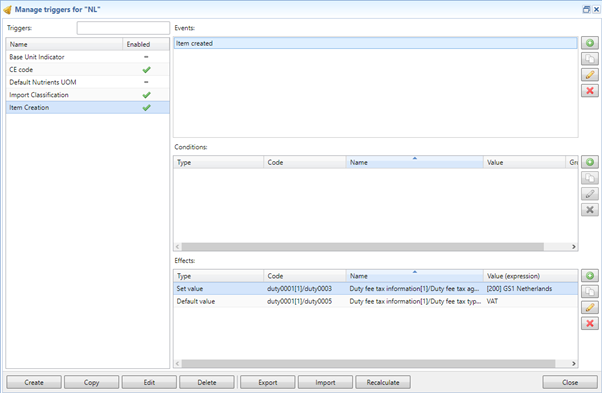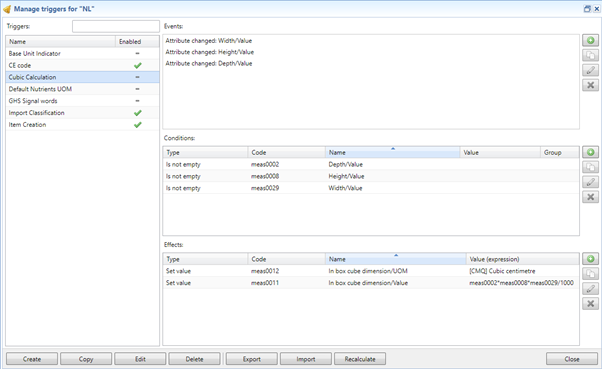Our PIM Experts love to share their passion for product information management and all the features, tips & tricks you might never have heard of. Our authors update you regularly with their knowledge in these ‘PIM Expert’ blogs, both accessible for the novice, and the professional PIM user. Today, we dive deeper into triggers for SRC-PIM.
What are triggers?
SRC-PIM offers a functionality called “triggers”. With triggers, you can set a specific value or perform a calculation for a certain attribute based on events and conditions. This enables you to automate the behavior for specific attributes.
For instance, you can program default values when a new item is created. Or automatically add the new item to a certain subset. Or you let PIM calculate the volume of your item, by multiplying the depth, height, and width of the item. Another example can be found when you automatically want to generate a product description. Triggers can be automated to concatenate two text values into a third attribute.

Events that are supported are:
- Item creation
- Item change
- Attribute change
When an event occurs the trigger is automatically executed. You can use multiple events to start a single trigger. You can configure multiple conditions in the trigger. The conditions you set will determine if the trigger is executed or not.

You can configure several effects. The types that are supported are:
- Set value
- Default value
- Empty value
- Add to subset
- Remove from subset
When using “Default value” the value is only set when no value yet is stored. When using “Set value” the configured value is always stored when the trigger is executed.
Rather than using specified values, you can also use expressions in the effects. Popular functions are:
- if – use this function to perform a classic “if-then-else” statement.
- concat – use this function to concatenate two or more values.
- substring – use this function to return part of the input text.
- len – use this function to return the length of a stored value.
- eq – use this function to check if a store value equals a specified value in the function.
- ucase/lcase – use this function to revert the value to uppercase or lowercase.
There are many ways in which the trigger function can ease your workload when using PIM. For more information on all the available expressions, contact us via sales@src.nl or call us on +31(0)229 233 154.